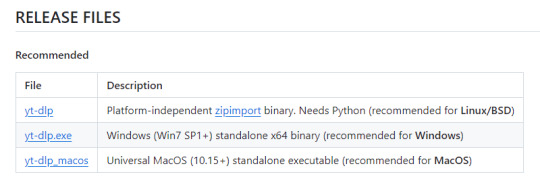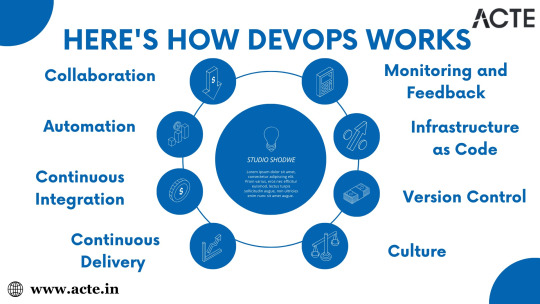#Quality Management System Software Development
Text
A Comprehensive Guide to Quality Management System (QMS) Software Development
Every business, regardless of its size or industry, needs to implement Quality Management Systems (QMS) to effectively maintain and enhance the quality of its products or services. Essentially, a QMS serves as a comprehensive framework that outlines the processes, procedures, and responsibilities required to ensure that all operations align with regulatory standards and consistently meet or exceed customer expectations.

A well-implemented QMS helps businesses monitor and improve their overall performance, identify areas for enhancement, and ultimately deliver superior quality offerings to their customers. When customizing QMS software for your business, make sure to explore this comprehensive guide that covers all aspects of Quality Management System (QMS) Software Development.
Read: Most Popular Types of Software Development
What is Quality Management System (QMS) Software Development?
A Quality Management System (QMS) is an organized platform that outlines procedures, methods, and duties to accomplish quality policies and goals. It ensures that products and services consistently meet both customer and legal requirements. By tracking activities, the QMS demonstrates that quality-related tasks are systematically performed.
To ensure customer satisfaction and compliance with regulations, a quality management system encompasses planning, quality control, quality assurance, and quality enhancement across various activities.
Read More: QMS Software Development
0 notes
Link
Healthcare Analytics Software Development enables accurate and timely data analysis for better clinical decision-making, saving lives & costs.
According to a recent survey, the healthcare sector produces immense quantities of data via electronic medical records (EMR), electronic health records (EHR), and health information exchange (HIE). Nonetheless, the difficulty arises in competently examining and leveraging this data to enhance decision-making and proficiently manage it. Healthcare analytics software development services provide an answer to these predicaments.
Healthcare analytics can also be integrated with telemedicine app development and can help various features in this type of heathcare app development
#predictive analytics in healthcare#Healthcare Analytics Software#Healthcare Analytics Software Development#healthcare data analysis software#healthcare data analytics software#Healthcare Data Analytics#business intelligence software for healthcare#clinical analytics software#Clinical Decision Support Systems#data analytics software for healthcare#health analysis software#health catalyst data operating system#Health Information Exchange#healthcare bi software#Healthcare Business Intelligence#healthcare business intelligence tools#Healthcare Information Systems#healthcare predictive analytics software#hospital analytics software#Healthcare Quality Management#medical analytics software#medical data analysis software#Population Health Management#population health analytics software
2 notes
·
View notes
Text
Tempted to do a "Tech Tuesdays" to help counter the Tuesday blues. Maybe not all from the same IT department. Maybe mix in some company IT with a software development company.
Obviously Jake is there. He's a whiz at handling high priority user problems. Things that need to be fixed ASAP.
Bucky is a master with the legacy programs that the company can't afford to upgrade to the new systems.
Curtis is a back end developer who's having to piecemeal things so that the legacy and new systems work together.
Steve is the UX programmer making sure everything looks good and is intuitive.
Johnny maintains the firewall and other security programs.
God the Bounty Hunter and Geralt as the Quality Assurance testers. They hunt down the problems, bugs, things the rest of the team would never think of that might go wrong.
I'm even tempted to include Ransom as the IT guy who rolls his eyes and makes you feel bad for not knowing how to fix the problem yourself (never mind that it's actually a highly complex problem you'd only make worse before you'd ever be able to fix it).
And potential managers for the various teams: Jonathan Pine, Captain Syverson.
59 notes
·
View notes
Text
Lessons in Japanese Game Design #3

From Killer7 to Deadly Premonition, Japanese game creators have intrepidly explored the theme of mental illness in a variety of genres, often in highly stylized form. The title I wish to approach today is a lesser known reference that approached this subject matter with unusual tact and clarity - a memory, if you will, which the collective conscious has long repressed.


Maria Kimi Tachi Ga Umareta Wake (The Reason You Were Born) is a late 1997 adventure game firmly rooted in the visual novel template that earned Chunsoft great repute. It was Break studio's debut, produced over a year and half for both the PlayStation and Saturn systems. It was published by Axela, a company born out of the internal management conflicts and accumulated debt at ASCII, leading to some of its executives teaming up in 1996 to establish a new project centred around software and magazine publishing. The story of this company's origins, alone, would merit a separate post.
Foreseeably, its release was followed by moderate controversy, such that worked mostly in its favour. One of the most polemical moments is found in the introduction scene, with its tasteful yet unvarnished depiction of Maria's suicide attempt, followed by her hospital admission. The imagery and that which it depicts remains as painful to watch today as it did decades ago.

While Maria is the central character, her tragedy and arc merge with that of the actual protagonist, Jun Takano, a fledgeling surgeon who, in the quality of certified psychiatrist, is assigned to provide therapy to the French-Japanese patient the morning after her admittance.



Maria's mental illness component comes to light as the story and therapy sessions progress. The key art consists of photos of women using coloured masks to visually represent the dimensions of her multiple personality disorder.

(Note: the text above is machine translated from the original Japanese game manual.)
Break was denounced for its bid to integrate so serious a derangement as a theme in a juvenile entertainment piece. Their reaction was to highlight the research done to ensure a careful treatment of the subject and sensitization of players via a bespoke message in the manual. In retrospect, the relative popularity of this game at the time was greatly owned to this fleeting controversy, and is believed to have been a crucial factor in the obtention of budget for Maria's far less spirited sequel.


As a work of pure fiction, scenario writer Kirie Fukuda was at liberty to carry the already divisive premise into even more exotic territory by establishing a mysterious yet playful correspondence between Maria's distinct personas and Egyptian deities.

The game's structure is modelled after hirudorama, a Japanese word interchangeably used to describe daytime TV fiction or soap operas; each of its nine chapters lasting nearly thirty minutes, equipped with a plot twist, cliff-hanger ending, and followed by rolling credits.

Perhaps the single most outstanding aspect about this production results from a tireless effort to surpass the standard of authenticity in what pertains facial expressions; particularly those of the multifaceted Maria, often with stilted yet all the more fascinating results.

In this and other regards, the influence of D no Shokutaku and its character, Laura, is clear and unmistakable. Maria's director and studio head at Break, Akira Okada, was an ex-Warp employee who worked as sales director precisely at the time when Eno's game was being developed.




Following a modest success, Break released Maria 2: Jutaikokuchi no Nazo in 99, a not-so-direct sequel which did not command the same attention as the original. The studio created other noteworthy visual novels: Ouma ga Toki and its sequel, as well as the most unusual Saishuu Densha, a paranormal-themed romantic story involving two strangers who meet in a train.


Before closing, it would pay to emphasize that this is an entirely different adventure game from the similarly forgotten MA-RI-A Ningōkan no Noroi, a 1996 3D CG horror adventure designed by Osamu Tezuka's son, Makoto; and scored by Kuniaki Haishima, of Kowloon's Gate and Siren 2 fame.


Nor is it related in any way with the so-called "Maria" episode from the Yarudora visual novel game series, Sampaguita, released in 1997 for the PlayStation by Sugar & Rockets and Production I.G.
#Maria Kimi Tachi Ga Umareta Wake#obscure japanese games#japanese game design#mental illness#suicide#axela#break#playstation#saturn
64 notes
·
View notes
Text
An Inquiry Into The Perfection Of Systems
(Or, Kevin Flynn is actually the worst and Clu never stood a chance)
So, this is a post about business analysis/project management, sort of. It is also, mostly… about Tron: Legacy. Hold onto your seats, we’re going to talk about IT project management.

Watch me.
Developing software and managing a software development project require surprisingly different skillsets. While intrinsically connected, Computer Logic and People Logic are not at all the same sort of logic. There is no better way to observe this than by putting developers in charge of managing a development project. (Looking at you, Flynn.)

I see you, Kevin Flynn.
There are a couple questions you have to answer in the process of a dev project. They are very common sense questions, like…
When will we call it done?
What does “done” mean?
How do we assess the quality of the result?
As is usually the case when common sense meets computers, the answer is more complicated than the question, to the point that a great many books and papers have been written on the subject. (1)

Does this look like a man who reads Project Management books? No.
Which brings me to a number of useful concepts: Definition of Done, Fit For Use, and Fit For Purpose. The terms may be more recent, but their spirit most definitely isn’t.
Definition of Done is what is says on the tin. It is formally defining what it means for an IT feature to be fully finished: what does it need to do, what does it need to look like, what quality standards does it need to meet, etcetera. This is not the place to be vague: you want concrete, measurable goals.

(Here’s a hint, in case that wasn’t already glaringly obvious: “Perfect” is not a good Definition of Done.)
Now, you can define this “done” in purely hard, technical terms. But typically, software is intended to do something for someone; Computer Logic, meet People Logic. That’s where the “Fit For” terms come in.

“Fit For Purpose” means, the software does what it was intended to do.
“Fit For Use” means, the software does what it does well enough to be actually usable.
THESE ARE NOT MUTUALLY INCLUSIVE.
But a good system is both.
A “Perfect” system would be both to the highest degree. Ideally suited to the requirements of its Users, in functionality and useability both.
Important here is that these are completely relative concepts, entirely dependent on what the users want out of their software. Regardless of how attainable it'd be, you cannot define “perfect” as a measurable goal without understanding what is required of the system in the first place.
Now… look at the Grid.

(Yeah. I know.)
The Grid has no users. The Grid has no user-end functionalities. The Grid isn’t set up to do anything, really, in the software sense. It fulfills no obvious function.
It’s a back-end environment accidentally turned front-end.
Which is… Imagine if someone walked into a factory and was like “oh wow I love the vibe of this place!” and then after getting home began setting up their own production lines, but based on vibes and aesthetic, with no regard to production output, worker safety, resource management, or even, you know, the goal of actually making anything.
Now picture being the manager of that factory.
They told you when you got this job that you had to make this the perfect factory.
But the place is falling apart despite your best efforts. People are getting injured left and right. The owner disappears for months on end, and when he shows up he just keeps adding more production lines that look cool to him rather than offering any clarity. The hope that he might have a plan for all of this is dwindling fast. You desperately try to keep track of anything quantifiable, trying not to think about the fact that you still don’t know what you’re even meant to be producing here. (Everything going wrong weighs on you; you were meant to make this perfect. You should have the ability to do what you were meant to do, right?)
And then, for some reason, random unauthorized strangers start walking into the factory breaking shit. And because the owner thinks they’re neat, they get to stay and do whatever, and you should be happy about it.
If this was an actual factory, you could... quit your job.
But this isn't a factory, it's a computer, and you, a piece of software, ARE your job.
Tell me this wouldn't drive you off-the-rails crazy. Like, actually full-on psychotic.

I know man. I know.
Computer Logic and People Logic are not the same thing. But Programs, being software and people both, have both influencing their experience.
So, was Clu evil? I rather think he never had a chance to be good.
After all, what is good, for a piece of software?
Allow me to refer to my explanations above.
..... ..... .....
(COMPLETELY UNNECCESARY) FOOTNOTES:
(1): One such book that Flynn could have read is “The Mythical Man-Month” by Frederic P. Brooks, which is very good and surprisingly relevant to this day, but I’m only mentioning because when I first heard the title I thought it was a Mothman pun.
42 notes
·
View notes
Text
yt-dlp: An Installation and Use Guide
This guide specifically walks through how to download and use yt-dlp on Windows, but if you have a Mac, you should still be able to follow along. Just make sure to download the Mac version of software whenever the option comes up. I'm also going to be assuming that you have a 64-bit Windows system. The standard today tends to be 64-bit for PCs, but if you're not sure and you want to double check then go to Settings -> System -> About -> Device Specifications -> System Type.
This guide also focuses on the command line version of yt-dlp (accessed on Windows by typing cd in the search bar). If you prefer to access the program through a GUI, you'll need to download additional software. Here's a link to help you get started. (LINK)
If you have any specific questions that you can't find an answer to within the linked resources, feel free to reach out and I'll do my best. Also, as someone who can be incredibly computer illiterate at times, I'm writing this guide in a way that explains a bunch of things I used to be confused about, so sorry if it goes over something in too much detail.
Resources:
These are just some handy links in case you run into a problem.
The yt-dlp GitHub page (has literally everything you might need)
The r/youtubedl wiki, includes a list of common errors and FAQs
Installing:
Click on this link. It will take you directly to the section on the yt-dlp GitHub page where you can download the program.
Feel free to download whichever version works best for you, but I recommend scrolling down to RELEASE FILES and downloading the version that works for your system from the Recommended section. I've included a picture below.

Once you've clicked on your version (yt-dlp.exe for Windows users), yt-dlp will download automatically. It should show up in your Downloads folder.
FFmpeg:
To merge video and audio files (which helps you get the best quality from youtube possible), you also need to download FFmpeg.
Scroll down even more to the DEPENDENCIES section.
Click on that first link. It will take you to the FFmpeg webpage. Clicking on Download in the sidebar will take you to a page full of different versions of FFmpeg. DO NOT CLICK on the big green button in the middle of the page. What we need is a version that is already compiled.
Find the section that looks like this (titled Get packages & executable files):

If you're Mac, pick accordingly. If you're Windows or even Linux, I actually recommend you download from this webpage. It contains the same versions as the Windows builds by BtbN but is instead managed by the developers of yt-dlp.
Find the one titled "ffmpeg-master-latest-win64-gpl.zip" (I've included a highlighted picture below for reference).

That will download and go into your Downloads folder too.
Setting up a Folder:
The easiest way to use yt-dlp is by placing it and FFmpeg into a folder. You can store the folder wherever you want, but you will need to remember (and type out) the path to the folder every time you want to use yt-dlp, so I recommend not making it too deep.
What I did was make a folder titled "yt-dlp" within my Desktop folder.

Move the yt-dlp application from your downloads folder to your new yt-dlp folder.
IMPORTANT: Assuming you also placed the yt-dlp folder into your Desktop folder (and assuming you are a Windows user), then the full path to your new yt-dlp folder should be C:\Users\YOUR_USERNAME\Desktop\yt-dlp. Fill YOUR_USERNAME in with whatever your profile is called on your PC.
For the FFmpeg zip you downloaded, extract the zip file into your new yt-dlp folder by clicking the zip, clicking Extract all from the tool bar, and then entering the path to your yt-dlp folder. Everything within the zip is already stored into a folder, so you don't need to create a new folder just for FFmpeg.
Now you're ready to go!
Using:
This section is going to be almost exclusively Windows-focused because I've never used a Mac before and I don't know how the Mac command line varies from the Windows one. I'm also not going to go into any details. If you want more info or to explore the options, I recommend checking out the links in the Resources section.
Type cd and then press enter into the Windows search bar to bring up the command line. If you've never used the command line before, this is what it looks like:

I covered up my username with that blue square.
Type the following into the command line:
cd Desktop
cd yt-dlp
This will take you to the same place where your yt-dlp application is stored. You must cd into the appropriate folders every time you want to use yt-dlp.
YouTube, Twitch, and Most Websites:
Find a link to whatever YouTube or Twitch video that you want.
Into the command line, type yt-dlp followed by the link you want to use. This is what it should look like (the red is what you type):
C:\Users\YOUR_USERNAME\Desktop\yt-dlp> yt-dlp https://www.youtube.com/watch?v=hECaXfk2Wo4
Press enter and viola! Your video should download! It will automatically go into your yt-dlp folder.
Twitter:
Twitter forces you to log into an account to view a video, so you have to give yt-dlp your account information if you want to download anything. I understand being wary of doing this.
The easiest way of going about this is by typing:
yt-dlp https://www.youtube.com/watch?v=hECaXfk2Wo4 -u YOUR_TWITTER_USERNAME -p YOUR_TWITTER_PASSWORD
And then your video should download as normal.
Alternatively, you can use your browser cookies as explained here.
Updating:
Here is the section on the GitHub that explains updating. Basically, type yt-dlp as if you want to download a video, but instead of also adding the link, add -U at the end.
Uploading:
If you want to upload a video or clip to tumblr and it's not working, my number one advice is to rename the video file to something simple and add .mp4 at the end. If that doesn't work, try converting it (either with yt-dlp itself or an online website). Sometimes you just have to fiddle with things before they work the way you want. Good luck!
#yt-dlp#youtube-dl#speaking#i generalized this but i use yt-dlp almost 99% for various clips which is why I'm putting this post here for you guys
9 notes
·
View notes
Text
The DevOps Lifecycle: Building, Testing, and Deploying with Confidence
DevOps, a combination of "Development" and "Operations," has emerged as a game-changer in the software development landscape. It represents a comprehensive approach that fosters collaboration between development and operations teams, emphasizes automation, and cultivates a culture of continuous improvement. In this blog post, we will delve deeper into the world of DevOps, exploring its principles, practices, and how it works.

The Essence of DevOps:
DevOps is more than just a buzzword; it's a mindset that aims to break down silos and bridge the gap between traditionally isolated development and operations teams. At its core, DevOps promotes collaboration, automation, and a relentless focus on delivering high-quality software faster and more efficiently.
Collaboration: DevOps encourages close collaboration and communication between development and operations teams. By working together from the initial stages of a project, teams can align their goals, streamline processes, and reduce conflicts.
Automation: Automation is the backbone of DevOps. It involves using tools and scripts to automate repetitive tasks, such as code building, testing, and deployment. This not only speeds up development but also reduces the risk of human error.
The DevOps Lifecycle:
DevOps introduces a structured lifecycle that encompasses various stages, ensuring a seamless flow from code development to deployment and beyond.
Continuous Integration (CI): In this phase, developers frequently integrate their code into a shared repository. CI tools automatically build and test the code with every change, ensuring it remains functional and error-free.
Continuous Delivery (CD): Building on CI, CD automates the deployment process, allowing for the continuous delivery of tested code to production or staging environments. This enables rapid and reliable releases.
Monitoring and Feedback: DevOps teams continuously monitor applications and infrastructure in production. They collect feedback on system performance, user experience, and any issues that arise. This feedback loop is crucial for making improvements and responding to issues promptly.
Infrastructure as Code (IaC): IaC is a DevOps practice that involves managing infrastructure using code. It enables the automated provisioning, scaling, and configuration of infrastructure resources, ensuring consistency and reproducibility.
Version Control: Version control systems like Git are essential for tracking code changes, enabling collaboration, and ensuring code integrity.

The Cultural Shift:
DevOps isn't just about tools and processes; it's also about fostering a cultural shift within an organization.
Shared Responsibility: DevOps promotes a culture of shared responsibility, where both development and operations teams take ownership of the entire software delivery process. This reduces blame-shifting and encourages problem-solving.
Accountability: DevOps encourages accountability for code quality, security, and performance. Team members are responsible for the outcomes of their work, from development to deployment.
Trust and Collaboration: Open communication and trust between teams are essential. DevOps encourages cross-functional teams to work together, breaking down traditional barriers.
DevOps is not just a trend but a transformative approach to software development and deployment. Its principles of collaboration, automation, and cultural transformation are reshaping the industry. ACTE Technologies, through its training and consulting services, plays a pivotal role in preparing professionals and organizations for success in the DevOps-driven world. Embracing DevOps and partnering with ACTE Technologies can lead to faster, more reliable software delivery and a competitive edge in today's dynamic tech landscape. Start your DevOps journey today and reap the benefits of this revolutionary approach.
18 notes
·
View notes
Text
Transforming Digital Landscapes: The Excellence of Corusview IT Services.

In today's fast-paced digital world, having a reliable and innovative technology partner is crucial for businesses aiming to stay ahead. Corusview IT Services, a leading web development company, stands out by offering top-tier software, web and mobile application development services. With a commitment to quality, reliability, and global reach, Corusview IT Services ensures that clients receive exceptional value for their investments.
In the ever-evolving digital landscape, businesses often face a myriad of challenges when it comes to web, mobile, and software development. Navigating these hurdles can be daunting, but the right technology partner can turn these challenges into opportunities.
Common challenges in Digital development:
Complexity and integration challenges
Web Development: Building dynamic, responsive, and user-friendly websites that effortlessly integrate with existing systems can be quite intricate.
Mobile Development: Creating mobile applications that function seamlessly across various devices and platforms while delivering an excellent user experience poses a significant challenge.
Software Development: Developing custom software solutions that need to integrate with multiple other applications and databases often results in compatibility issues.
Staying current with technology
The fast-paced nature of technological advancements makes it challenging for businesses to remain up-to-date with the latest trends and tools.
Ensuring digital solutions are scalable and future-proof demands continuous investment and specialized expertise.
User experience and design
Developing an intuitive and engaging user experience is essential for the success of any digital product.
Subpar design and usability can result in low user engagement and satisfaction.
Security and compliance
Maintaining the security of digital solutions and adhering to regulatory requirements is a critical concern. Data breaches and security vulnerabilities can have significant consequences for businesses.
How Corusview IT Services can assist:
Corusview IT Services provides a broad range of solutions specifically crafted to tackle these challenges and support businesses in thriving within the digital landscape.
Expert web development
Custom web development: Tailored solutions crafted to fit your unique business requirements.
Content Management Systems (CMS): User-friendly systems that simplify website updates and maintenance.
Cutting-Edge Mobile App Development
Mobile App Creation: Bespoke apps designed to meet the needs of diverse industries.
Cross-Platform Solutions: Strategies that extend your app’s reach and boost its effectiveness across different platforms.
Ongoing Updates and Support: Regular enhancements and maintenance to keep your app fresh, secure, and up-to-date.
User-centric designs
UX and UI Innovation: Creating immersive and visually appealing designs tailored to enhance user interaction.
Prototyping and Usability Testing: Developing and refining prototypes to ensure optimal functionality and user satisfaction.
Ongoing Enhancement: Continuously evolving designs based on user feedback to maintain relevance and effectiveness.
Pioneering Technology and Innovation
Forefront of technological advancements, embracing the latest innovations to deliver state-of-the-art solutions.
Cutting-edge technology ensures your digital products are not only scalable and future-ready but also perfectly in tune with the latest market trends.
Rigorous Quality Assurance:
Implementing comprehensive quality assurance processes to ensure that every solution meets the highest standards of performance and reliability.
At Corusview IT Services, we’re dedicated to helping businesses tackle digital development challenges and achieve their ambitions. Whether you need a cutting-edge website, a bespoke software solution, or a trailblazing mobile app, our skilled team is here to provide top-notch results.
Elevate your digital game with us and witness the transformative power of our solutions. Learn more about how we can boost your company’s digital presence by visiting www.corusview.com.
#it services#technology#web development#mobile development#software development#software development company#web app development#mobile application development#digital marketing#services
3 notes
·
View notes
Text
Welcome to Coachifie IT Training Institute
Empowering Your Future with Cutting-Edge IT Education
At Coachifie IT Training Institute, we are dedicated to shaping the next generation of IT professionals. Our mission is to provide high-quality, industry-relevant training that empowers individuals to excel in the ever-evolving world of technology.
Why Choose Coachifie?
1. Comprehensive Curriculum
Our programs are designed to cover a broad range of IT disciplines, from programming and cybersecurity to data science and cloud computing. Whether you're a beginner or looking to enhance your skills, our curriculum ensures that you gain in-depth knowledge and hands-on experience.
2. Industry-Experienced Instructors
Learn from the best in the field. Our instructors are seasoned IT professionals with extensive experience and up-to-date knowledge of industry trends. They bring real-world insights and practical skills to the classroom, helping you stay ahead in your career.
3. Practical Learning Approach
At Coachifie, we believe in learning by doing. Our training includes practical exercises, real-world projects, and case studies that prepare you for actual work scenarios. This hands-on approach ensures you can apply what you’ve learned in a real-world context.
4. State-of-the-Art Facilities
Our institute is equipped with the latest technology and tools to provide an optimal learning environment. From modern computer labs to advanced software, we ensure that you have access to the resources you need to succeed.
5. Flexible Learning Options
We understand that everyone's schedule is different. That’s why we offer a variety of learning formats, including full-time, part-time, and online courses. You can choose the option that best fits your lifestyle and career goals.
6. Career Support and Guidance
Our commitment to your success goes beyond the classroom. We offer career counseling, resume building, interview preparation, and job placement assistance to help you transition smoothly into the workforce.
Our Training Programs
Software Development: Learn programming languages, software engineering principles, and application development.
Cybersecurity: Gain skills to protect systems from cyber threats and understand the latest security protocols.
Data Science: Master data analysis, machine learning, and statistical techniques to interpret and leverage data.
Cloud Computing: Get hands-on experience with cloud platforms like AWS, Azure, and Google Cloud.
Networking: Understand network design, administration, and security to manage and troubleshoot network systems.
Success Stories
Don’t just take our word for it. Hear from our alumni who have transformed their careers with our training. Our graduates have gone on to work with top tech companies and have achieved remarkable success in their fields.
Get Started Today!
Ready to take the next step in your IT career? Contact us to learn more about our programs, schedule a tour of our facilities, or enroll in a course. Let Coachifie IT Training Institute be your partner in achieving your professional goals.
Contact Us:
Phone: [0330-1815820]
Email: [[email protected]]
Address: [midway centrum, 6th road, Rawalpindi]
Website: [https://coachifie.com/]
Transform your future with Coachifie IT Training Institute—where education meets innovation.
2 notes
·
View notes
Text
Revolutionizing Healthcare: The Role of Cloud Computing in Modern Healthcare Technologies
In today’s digital era, cloud computing is transforming industries, and healthcare is no exception. The integration of cloud computing healthcare technologies is reshaping patient care, medical research, and healthcare management. Let’s explore how cloud computing is revolutionizing healthcare and the benefits it brings.

What is Cloud Computing in Healthcare?
Cloud computing in healthcare refers to the use of remote servers to store, manage, and process healthcare data, rather than relying on local servers or personal computers. This technology allows healthcare organizations to access vast amounts of data, collaborate with other institutions, and scale operations seamlessly.
Download PDF Brochure
Key Benefits of Cloud Computing in Healthcare
Enhanced Data Storage and Accessibility Cloud technology allows healthcare providers to store massive volumes of patient data, including medical records, images, and test results, securely. Clinicians can access this data from anywhere, ensuring that patient information is available for timely decision-making.
Improved Collaboration Cloud-based healthcare platforms enable easy sharing of patient data between healthcare providers, specialists, and labs. This facilitates better collaboration and more accurate diagnoses and treatment plans, especially in multi-disciplinary cases.
Cost Efficiency The cloud reduces the need for expensive hardware, software, and in-house IT teams. Healthcare providers only pay for the resources they use, making it a cost-effective solution. Additionally, the scalability of cloud systems ensures they can grow as healthcare organizations expand.
Better Data Security Protecting sensitive patient information is critical in healthcare. Cloud computing providers invest heavily in data security measures such as encryption, multi-factor authentication, and regular audits, ensuring compliance with regulatory standards like HIPAA.
Telemedicine and Remote Patient Monitoring Cloud computing powers telemedicine platforms, allowing patients to consult with doctors virtually, from the comfort of their homes. It also enables remote patient monitoring, where doctors can track patients' health metrics in real time, improving outcomes for chronic conditions.
Advanced Data Analytics The cloud supports the integration of advanced data analytics tools, including artificial intelligence (AI) and machine learning (ML), which can analyze large datasets to predict health trends, track disease outbreaks, and personalize treatment plans based on individual patient data.
Use Cases of Cloud Computing in Healthcare
Electronic Health Records (EHRs): Cloud-based EHRs allow healthcare providers to access and update patient records instantly, improving the quality of care.
Genomics and Precision Medicine: Cloud computing accelerates the processing of large datasets in genomics, supporting research and development in personalized medicine.
Hospital Information Systems (HIS): Cloud-powered HIS streamline hospital operations, from patient admissions to billing, improving efficiency.
Challenges in Cloud Computing for Healthcare
Despite its numerous benefits, there are challenges to implementing cloud computing in healthcare. These include:
Data Privacy Concerns: Although cloud providers offer robust security measures, healthcare organizations must ensure their systems are compliant with local and international regulations.
Integration with Legacy Systems: Many healthcare institutions still rely on outdated technology, making it challenging to integrate cloud solutions smoothly.
Staff Training: Healthcare professionals need adequate training to use cloud-based systems effectively.
Request Sample Pages
The Future of Cloud Computing in Healthcare
The future of healthcare will be increasingly cloud-centric. With advancements in AI, IoT, and big data analytics, cloud computing will continue to drive innovations in personalized medicine, population health management, and patient care. Additionally, with the growing trend of wearable devices and health apps, cloud computing will play a crucial role in integrating and managing data from diverse sources to provide a comprehensive view of patient health.
Conclusion
Cloud computing is not just a trend in healthcare; it is a transformative force driving the industry towards more efficient, secure, and patient-centric care. As healthcare organizations continue to adopt cloud technologies, we can expect to see improved patient outcomes, lower costs, and innovations that were once thought impossible.
Embracing cloud computing in healthcare is essential for any organization aiming to stay at the forefront of medical advancements and patient care.
Content Source:
2 notes
·
View notes
Text
Sachin Dev Duggal | AI-Driven Debugging for Large-Scale Software Systems
AI-driven debugging is revolutionizing how software developers handle errors in large systems. Traditional debugging methods are becoming less effective as software grows more complex, leading to longer response times and potential project delays. AI technologies, particularly those developed by Builder.ai led by Sachin Dev Duggal and others, are proving to be invaluable in managing and preventing bugs, significantly improving the debugging process.
The Role of AI in Debugging
Artificial intelligence and machine learning aspects are increasingly being employed in newer debugging tools involving complex codes. There exist multiple functions that software can perform in such an investigation. It is also noteworthy that AI has helped detect and resolve bugs while the software is in use, thus preventing them from reaching the customer. Such a scenario is common, especially in large systems where a considerable amount of code is handled, such that manual debugging is very tedious and may often lead to errors.
Under the supervision of its Chief Wizard, Sachin Dev Duggal, Builder.ai exemplifies this trend by integrating AI into its software development platform. The platform uses AI to assemble applications quickly and efficiently, helping developers focus on creating custom features rather than getting strucked in debugging. By streamlining the development process, Builder.ai enhances the overall quality of the software produced, reducing the incidence of bugs from the outset.
#artificial intelligence#AI#technology#sachin dev duggal#sachin duggal#builder.ai#builder ai#sachin dev duggal news#sachin duggal news#builder.ai news#builder ai news#sachin dev duggal builder.ai#sachin duggal builder.ai#AI news#tech news#sachindevduggal#techy guy#sachin dev duggal ey#sachinduggal#innovation
2 notes
·
View notes
Text
How Manufacturers Can Manage Growth with ERP
Introduction:
In the dynamic landscape of manufacturing, where growth is the ultimate goal, the ability to adapt and streamline operations is paramount. Enter ERP (Enterprise Resource Planning), a powerful solution that has revolutionized the way manufacturers operate. In this blog, we'll explore the significant role of ERP software for manufacturing industry and how it serves as a catalyst for sustainable growth. Whether you're in traditional manufacturing or a software development company, ERP solutions are key to optimizing processes and managing growth effectively.

Understanding the Essence of ERP Software for Manufacturing:
1. Efficiency Unleashed:
ERP system for manufacturing industry is designed to enhance operational efficiency by integrating various business processes. From order management and procurement to production planning and inventory control, ERP systems bring together disparate functions into a unified platform, eliminating silos and enhancing overall efficiency.
2. Real-time Insights:
One of the key advantages of ERP solutions is the ability to provide real-time insights into business operations. Manufacturers can make informed decisions based on up-to-date information, helping them respond swiftly to market changes, manage resources effectively, and capitalize on growth opportunities.
3. Scalability Matters:
As a manufacturer, scalability is a constant consideration. Whether you're a growing traditional manufacturing unit or a software development company expanding its operations, ERP systems offer scalability to accommodate changing needs. The modular nature of ERP solutions allows businesses to add or modify functionalities as they evolve.
4. Improved Collaboration:
Collaboration is the bedrock of successful manufacturing. ERP fosters better communication and collaboration by providing a centralized platform where employees across different departments can access and share information seamlessly. This not only enhances teamwork but also accelerates decision-making processes.
ERP Software for Manufacturing Industry: Tailoring Solutions for Success
1. Production Planning and Scheduling:
In the manufacturing realm, effective production planning and scheduling are crucial for meeting customer demands and maintaining optimal inventory levels. ERP systems facilitate streamlined production processes, enabling manufacturers to create realistic production schedules, allocate resources efficiently, and minimize downtime.
2. Supply Chain Management:
A well-integrated supply chain is essential for manufacturers. ERP solution for the manufacturing industry ensures smooth coordination between suppliers, manufacturers, and distributors. This results in better inventory management, reduced lead times, and ultimately, improved customer satisfaction.
3. Quality Control:
Maintaining consistent product quality is non-negotiable in manufacturing. ERP solutions provide tools for comprehensive quality control by enabling real-time monitoring of production processes, tracking defects, and ensuring adherence to quality standards. This not only boosts customer confidence but also reduces wastage and rework costs.
4. Financial Management:
The financial aspect is the backbone of any business. ERP systems for manufacturing offer robust financial management capabilities, including invoicing, expense tracking, and financial reporting. This level of financial control is invaluable for manufacturers looking to manage growth effectively and make strategic financial decisions.
ERP for Software Development Company: Tailoring Solutions to Tech
1. Project Management:
For software development companies, managing projects efficiently is critical. ERP solutions designed for the software development industry offer project management modules that help track project timelines, allocate resources effectively, and ensure that development projects stay on course.
2. Resource Planning:
In the software development realm, talent is a primary resource. ERP systems tailored for software companies facilitate resource planning by providing insights into employee availability, skills, and project commitments. This ensures optimal resource allocation for project success.
3. Version Control and Collaboration:
Version control and collaboration are key aspects of software development. ERP solutions for software companies include features that enable version control, code collaboration, and documentation management. This ensures that development teams work cohesively, leading to efficient project outcomes.
4. Compliance and Security:
In the software development industry, compliance and security are paramount. ERP systems for software companies often include modules that help manage compliance with industry standards and ensure data security. This is especially crucial in an era where data protection is a top priority.
Conclusion:
As manufacturers navigate the complexities of growth, ERP software emerges as an indispensable tool for success. Whether you're in traditional manufacturing or a software development company, the benefits of ERP systems are far-reaching. From enhancing operational efficiency and providing real-time insights to tailoring solutions for specific industry needs, ERP is the key to managing growth effectively. Embrace the power of ERP, and propel your manufacturing operations into a future of streamlined processes, informed decision-making, and sustained success.
#Go-To-Market#GTM#Supply-Chain-Management#Technology#India#ERP-India#ERP#Business-Solutions#Manufacturer#Engineering#Inventory-Management#ERP Software for Manufacturing Industry#ERP System for Manufacturing Industry#ERP for Software Development Company#ERP Solutions for Manufacturing
7 notes
·
View notes
Text
Boost efficiency with our Production
Management Solution! 🚀
Our Services:
🏆 ISO Certifications (QGOS Registered Certificate)
🌎 Website, E-Commerce Development
⚙️ Website Migration, Maintenance & Hosting
📊 Digital Marketing (SEO, SEM, SMM)
🖥️ ERP Software Solution (Etask Pro)
🏥 Healthcare Quality Management System
🩺 Healthcare Facility Licensing & Consultancy
🎨 Designing & Branding
📝 Creative Content Writing
📺 Ad Campaigns (YouTube, Google, Social Media)
For inquiry and Details
📱+974 6655 7784
📩[email protected]
Visit our website to know us more
🎯www.qacqatar.com
🎯www.qacdirectory.com
🎯www.isocertificateqatar.com
Visit our YouTube Chanel to see more
📺 https://bit.ly/3baB5pn
2 notes
·
View notes
Text
A Comprehensive Guide to the Top Industries Attracting FDI in India

India has emerged as one of the most attractive destinations for Foreign Direct Investment (FDI) in recent years, thanks to its robust economic growth, favorable demographics, and ongoing policy reforms. FDI plays a crucial role in stimulating economic development by bringing in capital, technology, and expertise. In this comprehensive guide, we will delve into the top industries that are attracting FDI in India.
1. Information Technology (IT) and Software Services:
India's IT industry has been a pioneer in attracting FDI, fueling the country's economic growth and creating millions of jobs. With a large pool of skilled IT professionals, cost-effective services, and a conducive business environment, India continues to be a global hub for software development, IT outsourcing, and business process outsourcing (BPO).
India's Information Technology (IT) and software services industry have been pivotal in attracting Foreign Direct Investment (FDI) due to several key factors:
1. Skilled Workforce:
India boasts a vast pool of highly skilled IT professionals, including software engineers, developers, and project managers. The country's education system emphasizes STEM (Science, Technology, Engineering, and Mathematics) fields, producing a large number of graduates with expertise in computer science and information technology. This skilled workforce is instrumental in delivering high-quality software development, IT outsourcing, and business process outsourcing (BPO) services to clients worldwide.
2. Cost-Effectiveness:
The cost of labor in India is significantly lower compared to developed countries, making it an attractive destination for outsourcing IT projects and services. Foreign companies can leverage India's cost-effective labor market to reduce their operational expenses while maintaining high standards of quality and efficiency. This cost advantage has been a major driver for multinational corporations to set up offshore development centers and service delivery hubs in India.
3. Conducive Business Environment:
India offers a conducive business environment for IT companies, characterized by liberalized policies, supportive government initiatives, and a well-established legal framework. The government has implemented various reforms to promote ease of doing business, simplify regulatory procedures, and encourage foreign investment in the IT sector. Additionally, initiatives such as Digital India and Make in India have further propelled the growth of the IT industry by fostering innovation, entrepreneurship, and technology adoption.
4. Global Reputation:
Over the years, India has built a strong reputation as a leading destination for IT and software services globally. Indian IT companies have demonstrated expertise in delivering cutting-edge solutions, leveraging emerging technologies, and meeting the diverse needs of clients across industries. This reputation has attracted multinational corporations to partner with Indian firms, outsource IT projects, and establish long-term collaborations for software development, maintenance, and support services.
5. Innovation and R&D:
India's IT industry is not just about cost arbitrage; it is also a hub for innovation, research, and development. Many global technology firms have set up innovation centers, research labs, and technology incubators in India to tap into the country's talent pool and drive innovation. These centers focus on developing next-generation technologies, conducting R&D activities, and creating intellectual property in areas such as artificial intelligence, machine learning, blockchain, and cloud computing.
2. Telecommunications:
India's telecommunications sector has witnessed significant FDI inflows, driven by the rapid expansion of mobile and internet services. With a massive consumer base and increasing smartphone penetration, telecom companies are investing heavily in network infrastructure, spectrum auctions, and digital technologies to capitalize on the growing demand for data services.
India's telecommunications sector has emerged as a prominent recipient of Foreign Direct Investment (FDI) due to several key factors:
1. Expanding Market Potential:
India has one of the largest telecommunications markets in the world, with over a billion mobile subscribers and rapidly increasing internet penetration. The country's vast population, growing middle class, and rising disposable incomes have fueled the demand for voice, data, and digital services across urban and rural areas. This immense market potential offers lucrative opportunities for telecom companies to invest in network infrastructure, spectrum allocation, and innovative services to cater to the diverse needs of consumers.
2. Mobile Revolution:
India has witnessed a mobile revolution in recent years, driven by affordable smartphones, competitive tariffs, and widespread adoption of mobile internet services. The proliferation of mobile devices has transformed communication, commerce, and entertainment, creating new business models and revenue streams for telecom operators. Foreign investors recognize India's mobile-first market dynamics and are keen to capitalize on the growing demand for voice calls, messaging apps, mobile data, and value-added services.
3. Digital Connectivity:
The government's Digital India initiative aims to bridge the digital divide and promote inclusive growth by ensuring broadband connectivity to all citizens. This ambitious program has spurred investments in fiber-optic networks, 4G/5G infrastructure, and rural broadband initiatives to enhance digital connectivity and enable access to digital services in remote areas. Foreign telecom companies view India's digital transformation as an opportunity to deploy advanced technologies, improve network coverage, and deliver high-speed internet services to underserved communities.
4. Spectrum Auctions:
Spectrum is a critical asset for telecom operators to expand their network capacity, improve service quality, and offer new services to customers. India's spectrum auctions provide an opportunity for telecom companies to acquire additional spectrum bands and strengthen their market position. Foreign investors participate in these auctions to acquire spectrum licenses and invest in network upgrades, spectrum refarming, and technology modernization to enhance their competitiveness in the market.
5. Convergence of Services:
The convergence of telecommunications with other sectors such as media, entertainment, and technology is driving investment opportunities in integrated services and content delivery platforms. Foreign telecom operators are exploring partnerships, mergers, and acquisitions with content providers, OTT (Over-the-Top) platforms, and digital media companies to offer bundled services, streaming content, and personalized experiences to subscribers.
6. Policy Reforms:
The Indian government has introduced several policy reforms to liberalize the telecom sector, attract foreign investment, and promote healthy competition. Initiatives such as National Digital Communications Policy (NDCP), ease of doing business reforms, and regulatory clarity have created a favorable investment climate for telecom companies. Foreign investors are encouraged by the government's commitment to reforming regulations, promoting innovation, and fostering a vibrant telecom ecosystem in India.
3. Automobiles and Automotive Components:
The Indian automotive industry has attracted substantial FDI from global automakers and component manufacturers seeking to establish manufacturing facilities, R&D centers, and distribution networks. India's competitive manufacturing costs, skilled workforce, and improving infrastructure have positioned it as a key player in the global automotive market.
4. Pharmaceuticals and Healthcare:
The pharmaceutical sector in India has been a magnet for FDI due to its strong regulatory framework, large market potential, and cost advantages in drug manufacturing. Foreign pharmaceutical companies are investing in research collaborations, production facilities, and distribution networks to tap into India's growing healthcare needs and leverage its expertise in generic drugs.
5. Renewable Energy:
India's ambitious renewable energy targets and supportive government policies have attracted significant FDI inflows into the sector. Foreign investors are investing in solar, wind, hydro, and biomass projects, driven by India's vast renewable energy potential, favorable regulatory environment, and growing demand for clean energy solutions.
6. Retail and E-Commerce:
India's retail and e-commerce sector has witnessed a surge in FDI with the liberalization of FDI policies and the rapid growth of online shopping. Global retail giants are partnering with Indian companies or establishing their own operations to tap into the country's burgeoning consumer market and rising middle-class population.
7. Real Estate and Construction:
The Indian real estate sector continues to attract FDI, driven by urbanization, infrastructure development, and demand for commercial and residential properties. Foreign investors are participating in joint ventures, development projects, and real estate investment trusts (REITs) to capitalize on India's growing urban centers and infrastructure needs.
8. Financial Services:
India's financial services industry is experiencing a steady influx of FDI, driven by liberalization measures, digital transformation, and increasing investor interest. Foreign banks, insurance companies, and fintech startups are expanding their presence in India to cater to the growing demand for banking, insurance, and digital payment services.
9. Food Processing:
The food processing sector in India has attracted FDI due to its vast agricultural resources, changing consumer preferences, and government incentives. Foreign companies are investing in food processing plants, cold chains, and distribution networks to meet the rising demand for processed and packaged food products in India.
10. Infrastructure:
India's infrastructure sector offers immense opportunities for FDI across various segments such as transportation, energy, and urban development. Foreign investors are participating in public-private partnerships (PPPs), infrastructure projects, and investment funds to address India's infrastructure gaps and support its economic growth.
In conclusion, India offers a diverse range of investment opportunities across various industries, making it an attractive destination for FDI. With a growing economy, favorable demographics, and ongoing policy reforms, India continues to attract foreign investors seeking high returns and long-term growth prospects. However, investors need to navigate regulatory challenges, market dynamics, and cultural nuances to succeed in India's competitive business landscape.
This post was originally published on: Foxnangel
#fdi in india#fdi investment in india#foreign invest in india#foreign direct investment#it industry#foreign companies#renewable energy#green energy#foxnangel#invest in india
2 notes
·
View notes
Text
Discover Excellence in Education at Himalayan Institute of Technology, Dehradun
Are you searching for a prestigious institution to pursue higher education? Look no further than the Himalayan Institute of Technology (HIT) in Dehradun. Nestled in the picturesque landscapes of the Himalayas, HIT offers an array of courses designed to provide students with a comprehensive and practical learning experience. With affiliations to both HNGBU and SDSU universities, HIT stands as a beacon of quality education and professional development.
Explore Our Diverse Course Offerings
At Himalayan Institute of Technology, we offer a variety of undergraduate programs tailored to meet the needs of today’s dynamic job market. Our courses include:
Bachelor of Commerce (B.Com)
Our B.Com program is designed to equip students with foundational knowledge in commerce, accounting, finance, and business management. With a focus on practical skills and industry insights, our graduates are well-prepared for careers in various sectors, including banking, finance, and corporate management.
Bachelor of Business Administration (BBA)
The BBA program at HIT focuses on developing leadership and entrepreneurial skills. Students gain a deep understanding of business operations, strategic management, and organizational behavior. Our BBA graduates are highly sought after by top companies and startups alike.
Bachelor of Hotel Management (HM)
Our HM program is perfect for those looking to excel in the hospitality industry. With comprehensive training in hotel operations, food and beverage management, and customer service, students are prepared to take on key roles in hotels, resorts, and other hospitality enterprises.
Bachelor of Computer Applications (BCA)
The BCA course at HIT is designed for students interested in the world of information technology. Covering topics like programming, software development, and database management, this program prepares students for successful careers in IT and software development.
Bachelor of Science in Information Technology (B.Sc IT)
Our B.Sc IT program provides students with in-depth knowledge of computer systems, networking, and information security. This course is ideal for those aiming to become IT professionals, system administrators, or cybersecurity experts.
Why Choose Himalayan Institute of Technology?
Affiliated with HNGBU and SDSU Universities: Our affiliations with Hemwati Nandan Bahuguna Garhwal University (HNGBU) and Sri Dev Suman Uttarakhand University (SDSU) ensure that our programs meet high academic standards and provide students with recognized qualifications.
Experienced Faculty: Our team of highly qualified and experienced faculty members are dedicated to providing students with the best education and guidance.
State-of-the-Art Facilities: HIT boasts modern classrooms, well-equipped laboratories, and a comprehensive library to support students in their academic pursuits.
Industry Connections: We maintain strong ties with various industries, offering students opportunities for internships, placements, and hands-on experience.
Holistic Development: At HIT, we emphasize the overall development of our students, encouraging participation in extracurricular activities, sports, and cultural events.
Join Us at Himalayan Institute of Technology
Embark on a journey of academic excellence and professional success with the Himalayan Institute of Technology, Dehradun. Visit our website at http://hitdoon.com for more information on admissions, courses, and campus life. Discover why HIT is the preferred choice for aspiring professionals in commerce, business administration, hotel management, computer applications, and information technology.
Choose HIT and take the first step towards a promising future.
2 notes
·
View notes
Text
College Tools Education
Master Time Management
One of the first steps toward increased productivity is effective time management. Renowned publications like Harvard Business Review emphasize that time management is more about big-picture strategic planning rather than just everyday life hacks. It starts with setting clear priorities and understanding the difference between urgent and important tasks.
Here's how to get started:
Begin each week by mapping out major assignments, exams, and other obligations.
Utilize digital calendars and task management tools to keep everything organized.
Avoid multitasking as it can reduce the quality of your work and lead to burnout.
Develop a Study Routine
Studying efficiently is paramount for students who aim to grasp complex economic models and business strategies. Customizing a study plan that fits your learning style can significantly increase your retention and understanding.
Try these tips:
Dedicate specific times of the day to study when you're least likely to be interrupted.
Break down study material into manageable sections to avoid overwhelm.
Use active learning techniques such as teaching concepts to a peer or creating your own exam questions.
Utilize Multiple Choice Question Solvers
For exams, particularly those involving multiple-choice questions, students can benefit from technological advancements such as AI-powered multiple choice questions solvers. These tools can provide practice quizzes and instant feedback, which is essential for mastering the material.
Consider these benefits:
Immediate results help to quickly identify areas where more review is needed.
They resemble real exam formats, aiding in practice under timed conditions.
Some solvers can even offer detailed explanations for answers, enhancing your learning curve.
Enhance Productivity with Tech Tools
In the age of remote learning and digital tools, harnessing technology is vital for staying ahead. Many apps and software are designed to help with note-taking, project management, and collaboration. Our very own College Tools has a range of features that seamlessly integrate with your workflow in any Learning Management System.
Focus on tools that:
Allow for efficient note-taking and information organization.
Enable project collaboration in real-time with peers or instructors.
Offer customization to tailor the functionalities according to your productivity needs.
Balance Work and Leisure
As much as productivity is about working efficiently, it's also about resting effectively. Business and economics students should not underestimate the power of proper rest and leisure activities in maintaining a healthy work-life balance.
Here's how you can achieve balance:
Schedule breaks and leisure activities just as you would academic tasks.
Engage in activities that are completely unrelated to your studies to give your mind a break.
Practice regular self-care routines to ensure you're mentally and physically well.
Strategies from Industry Leaders
Emulating the productivity tactics of successful business leaders can also be enlightening. Outlets such as Forbes detail various approaches taken by industry professionals which can be adapted to your student life.
Key takeaways include:
Strict prioritization to allocate your best hours to the most critical tasks.
Delegation skills, which in a student context, means seeking help when you're overwhelmed, perhaps in the form of a study group.
Continuous learning and improvement, as productivity is a skill that can always be developed further.
Effective Use of Breaks
According to Lifehack, short breaks can play a significant role in maintaining productivity over long study sessions. Students should take regular breaks to stay focused and rested.
To make the most of your breaks:
Step away from your study area to ensure a change of environment.
Use techniques such as the Pomodoro Technique to structure time periods of focused study and rest.
Engage in activities that are rejuvenating, whether it's a quick walk outside or a brief meditation session.
The journey to becoming highly productive is a personal one, and what works for one student may not be as effective for another. It's important to try different strategies, measure your progress, and tweak your approach accordingly. Whether it's streamlining your study habits or harnessing the potential of digital tools, every small step towards increased productivity paves the path for success in the dynamic fields of business and economics.
2 notes
·
View notes